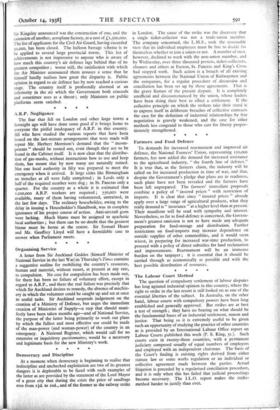The Labour Court Method The question of compulsory settlement of
labour disputes has long agitated industrial opinion in this country, where the right to strike in the last resort is still looked on as one of the essential liberties of the subject. In Australia, on the other hand, labour courts with compulsory powers have been long established and generally approved. But strikes arc at best a test of strength ; they have no bearing on what should be the fundamental bases of an industrial settlement, reason and justice. That being so it is extremely useful to be given such an opportunity of studying the practice of other countries as is provided by an International Labour Office report on Labour Courts published this week (P. S. King, 5s.). Such courts exist in twenty-three countries, with a permanent judiciary composed usually of equal numbers of employers and employed with an independent chairman. The basis of the Court's finding is existing rights derived from either statute law or some works regulation or an individual or collective agreement made between the parties. Actual litigation is preceded by a regularised conciliation procedure, and it is only when this has failed that judicial proceedings become necessary. The I.L.O. report makes the strike- method harder to justify than ever.


















































 Previous page
Previous page